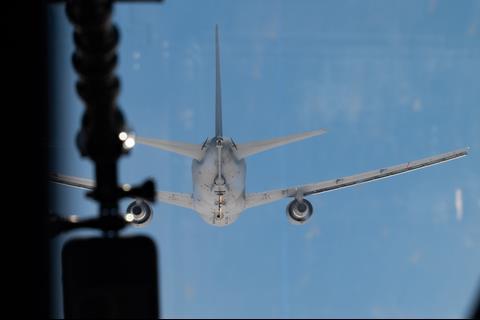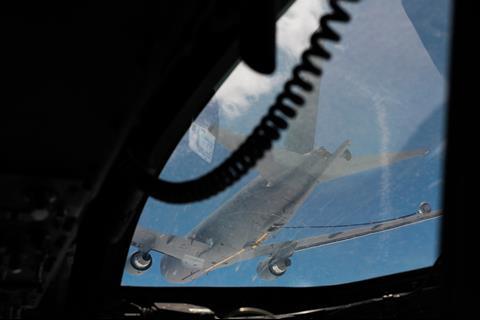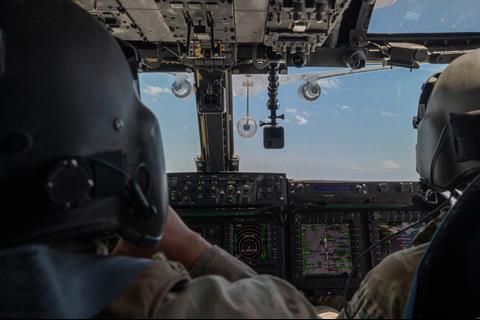The US Air Force has conducted the first air-to-air refuelling between the Boeing KC-46A and a Bell Boeing CV-22 Osprey of the Air Force Special Operations Command (AFSOC).
The work took place over Cannon AFB in the State of New Mexico, according to the USAF.
“This being the first time we operationally refuelled with a KC-46, we were able to get some good video for training and development,” says USAF Major Anthony Belviso, the CV-22 aircraft commander.
“We were also able to get some understanding of what it feels like to fly behind the jet, and work on some different refuelling techniques and practices.”
The work involved refuelling the tiltrotor via the KC-46A’s centreline hose-and-drogue system. The KC-46A is also equipped with a hose-and-drogue refuelling pod under each wing – the 767 derivative’s primary method of delivering fuel is via its tail-mounted boom.
According to the USAF, the ability to use the centreline hose-and-drogue system allows the KC-46A to refuel the Osprey and other hose-and-drogue-compatible aircraft without any modification.
“The CV-22 is specifically designed for long-range missions, and when you add on top of that an aerial refuelling capability you can extend that distance to the point where you’re only limited by how long the crew is able to fly,” says Belviso.
“The KC-46 can get enough fuel to get multiple CV-22s that much further both into and out of combat.”
The USAF states that refuelling directly from the KC-46A saves time. Ordinarily, a CV-22 on a combat mission would refuel from a Lockheed Martin MC-130J, which would in turn have to refuel from another tanker.
“Because KC-46s can refuel us directly, we can go straight to them and get everything done much more quickly,” adds Belviso.






























